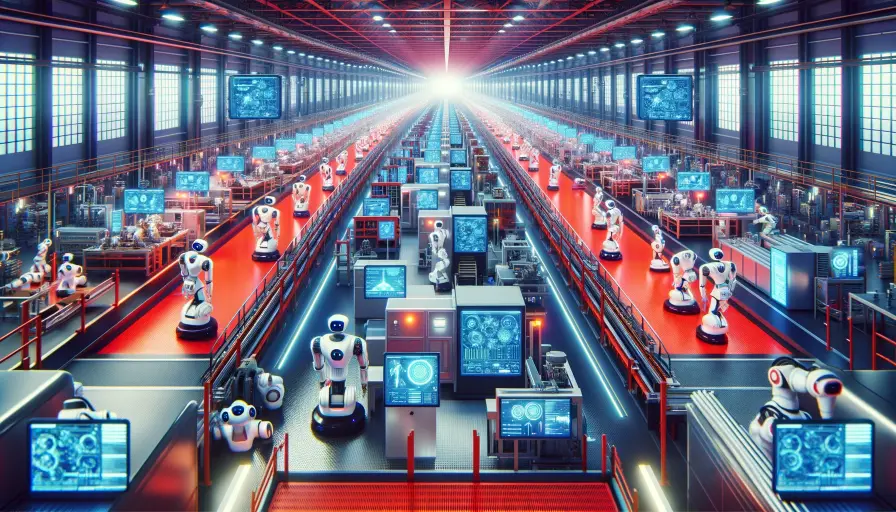Artificial Intelligence (AI) is the talk of the town and everyone’s getting in on it. Recent headlines such as “AI Will Transform the Global Economy” and “Tech companies are slashing thousands of jobs as they pivot toward AI” have gripped the public, but a recent study by MIT has revealed that replacing workers with AI is actually more expensive than previously thought.
The study, titled “Beyond AI Exposure: Which Tasks are Cost-Effective to Automate with Computer Vision” conducted by five MIT researchers, focused on tasks suitable for AI, such as those performed by teachers, property appraisers, and bakers.
Nowadays, there is a growing trend among technology companies to invest heavily in AI technologies, often leading to significant job restructuring and layoffs. SAP, a German software giant, is a recent example, announcing a $2 billion investment in AI as part of its transformation program, along with plans to restructure 8,000 roles. This restructuring includes layoffs and retraining some workers to work with AI, although SAP expects its employee count to remain stable by year’s end.
This trend is not isolated to SAP. The advent of generative AI tools like ChatGPT has spurred many large tech companies to focus on AI, frequently resulting in job cuts. The increasing use of large language models in companies often leads to layoffs, particularly in roles vulnerable to AI, such as coding and engineering.
Google has also laid off hundreds from its ad sales team amidst further investment in AI; Microsoft is investing billions in OpenAI while cutting jobs; and Duolingo reduced its contractor workforce by 10% at the end of 2023, though not all cuts were AI-related.
While some companies are reallocating resources to AI and reducing spending in other areas, the recent layoffs in the tech sector could be concerning for employees who were told AI would eliminate repetitive tasks and allow for more creative work. Given the pervasive influence of technology across various sectors, the actions of these tech corporations could indicate broader economic implications.
What seems clear is that while eliminating jobs as part of AI investment may be an immediate solution for companies, the overall impact of the AI revolution on the workplace remains uncertain and is an important area to watch.
There is a dual-edged nature of the rapid advancement of AI and its impact on the global economy. While AI promises to jumpstart productivity, boost global growth, and raise incomes, it also presents the risk of job replacement and deepening inequality. About 40% of global employment is potentially affected by AI, with advanced economies facing both higher risks and opportunities compared to emerging markets and developing countries.
In advanced economies, approximately 60% of jobs could be impacted, with some benefiting from increased productivity and others facing challenges such as reduced labor demand and potential job elimination. The situation in emerging markets and developing countries is less immediate, but their lack of infrastructure and skilled workforces to utilize AI could lead to widening international inequalities.
Within countries, AI might exacerbate income and wealth inequality. Skilled workers who can harness AI are likely to see increases in productivity and wages, while those unable to adapt might fall behind. Higher-income workers and capital owners might disproportionately benefit from AI, further increasing inequality. Proactive policymaking is necessary to address these issues, emphasizing the need for comprehensive social safety nets and retraining programs to ensure an inclusive AI transition.
The International Monetary Fund (IMF) has created an AI Preparedness Index to assess countries’ readiness for AI integration, taking into account digital infrastructure, human capital, labor market policies, and regulatory frameworks. Wealthier economies generally score higher on this index, indicating better preparedness for AI adoption. The recommendations for advanced economies focus on prioritizing AI innovation and integration, backed by robust regulatory frameworks. In contrast, emerging market and developing economies should invest in digital infrastructure and workforce training. Overall, once AI does indeed begin displacing workers, there is a need for thoughtful policies and investments to manage AI’s impact, ensuring its benefits are inclusive and its risks, like job displacement and inequality, are mitigated.
The MIT study highlights several limitations and challenges associated with the implementation and functionality of AI. While AI excels in areas like pattern recognition and image analysis, it incurs significant installation and maintenance costs. In many situations, human skills and intuition remain more cost-effective than relying on AI. Additionally, AI systems face challenges related to high power consumption and complexities in implementation.
The study points out that AI lacks the depth of human cognitive processes, including conscious and subconscious thought. This means that tasks requiring human-like intuition, gut feeling, and implicit knowledge, which are crucial for critical thinking and emotional intelligence, are still beyond the reach of automation. These human qualities are considered irreplaceable in the job market.
Despite AI’s impact on various industries such as banking, marketing, retail, legal services, transportation, and healthcare, most jobs are not immediately at risk of being automated. A report from Goldman Sachs in 2023 estimates that about 18% of global work, or roughly 300 million jobs, could be affected by generative AI.
However, the MIT study acknowledges that future advancements in AI could significantly enhance its automation capabilities, but suggests that the narrative of AI replacing a large number of jobs in the near future is somewhat exaggerated. While AI continues to advance and impact various sectors, its current limitations mean that the human workforce remains vital in many areas.
In other words, the MIT study indicates that the fears of an imminent robotic takeover may be premature.
